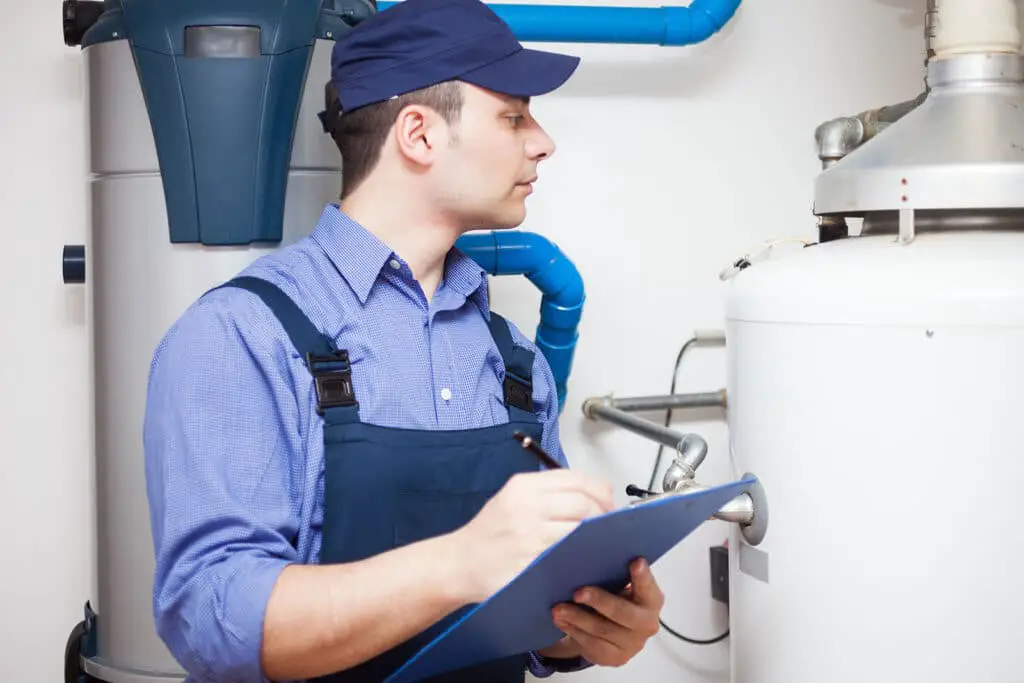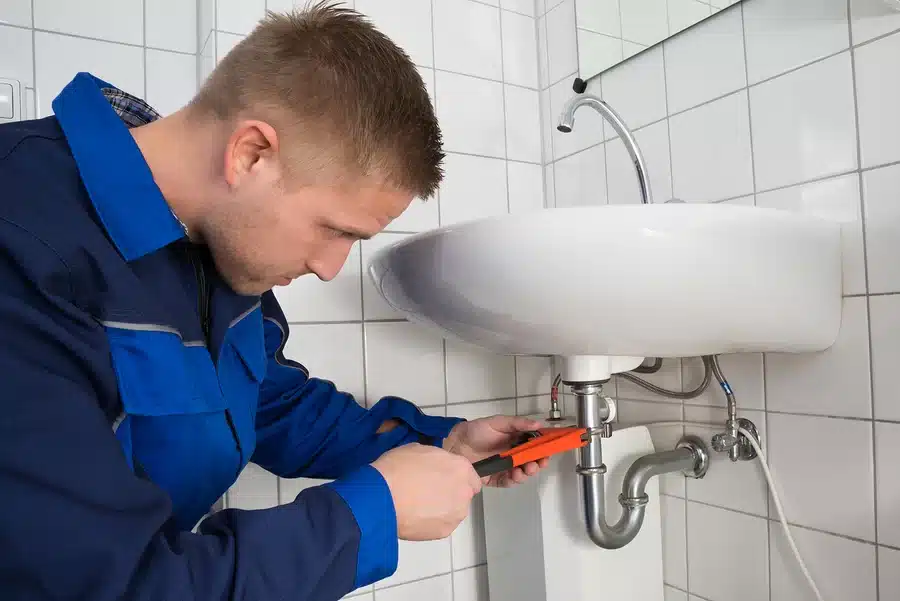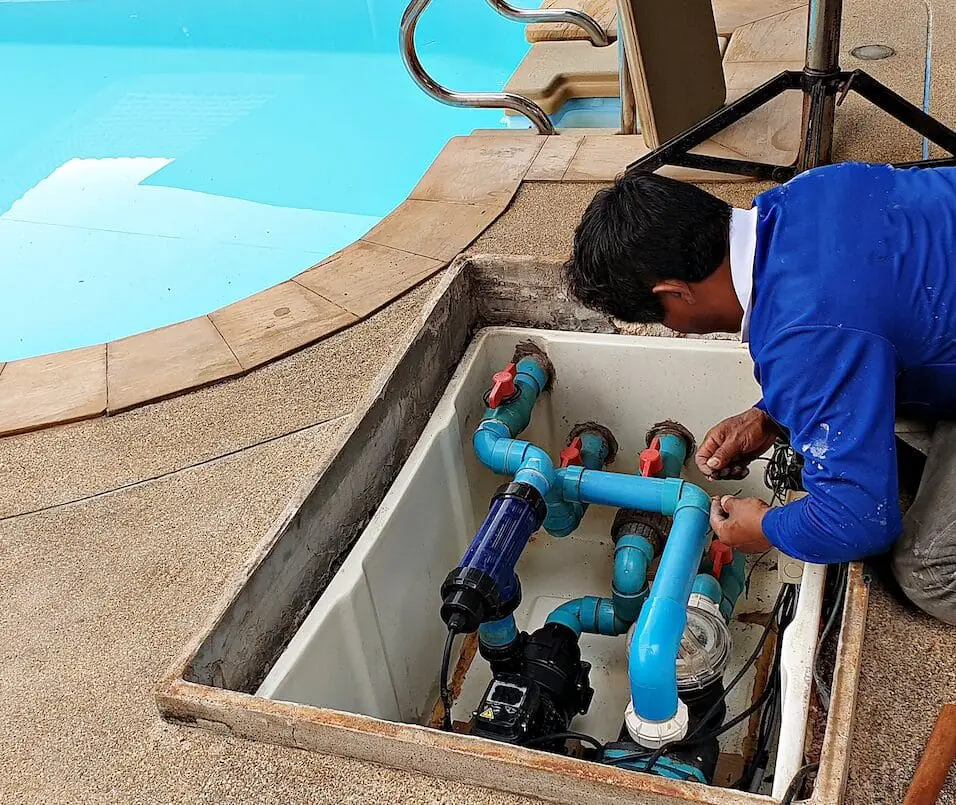How Much Is A Plumbing Inspection
Introduction:
How Much Is A Plumbing Inspection: Regular plumbing inspections are essential for maintaining the functionality and integrity of your plumbing system. They help identify potential issues, such as leaks, blockages, or faulty components, before they turn into major problems. However, one common question that arises when considering a plumbing inspection is: How much does it cost? In this introduction, we will explore the factors that influence the cost of a plumbing inspection, provide general cost estimates, and discuss the importance of investing in professional inspections.
The cost of a plumbing inspection can vary depending on several factors. Factors that may influence the cost include the size and complexity of the plumbing system, the location of the property, and the rates charged by plumbing professionals or companies. Additionally, the extent of the inspection can also affect the cost. For example, a basic inspection may involve checking for leaks and assessing water pressure, while a more comprehensive inspection may include sewer line inspections, water heater inspections, and other detailed evaluations of the entire plumbing system.
In terms of cost estimates, it’s important to note that every plumbing inspection is unique, and prices can vary. As a rough guideline, a basic plumbing inspection can range from $100 to $250, while a more comprehensive inspection can cost anywhere from $200 to $500 or more.

Why is a plumbing inspection important?
A thorough plumbing inspection, performed by a licensed plumber can alert you to early warning signs of impending failures. Every exposed water line and connection are inspected for leaks and signs of wear or corrosion.
Early Detection of Issues
A plumbing check can help you find problems with your plumbing system before they get too bad. If you find problems like leaks, clogs, or broken parts, you can fix them right away, before they get worse or do a lot of damage. If you catch the problem early, you can avoid expensive fixes and keep your daily life as normal as possible.
Prevention of Costly Repairs
If you check your pipes often, you can avoid significant issues that cost a lot to fix. Finding and fixing tiny issues as soon as they happen will keep them from getting. Worse and damaging your property in a way that will cost a lot to fix or replace. If you plan ahead, you can save money over time.
Improved Efficiency
Having your pipes checked makes sure that your water works well. During the check, any trouble spots or places where water or energy is being wasted will be found. Some of these issues can help your plumbing work better. Help you save water, and maybe even help your energy bills go down.
Which test is conducted for house plumbing?
Air Test – Generally used to test underground and vertical pipes. Water Test – Most commonly used for underground house sewer pipes.
Water Pressure Test
This test measures the water pressure in the plumbing system. It helps identify if the pressure is within the acceptable range and ensures proper water flow throughout the house. It can help identify any issues with low or high water pressure that may require adjustments or repairs.
Leak Detection Test
This test is performed to identify any leaks in the plumbing system. It involves pressurizing the pipes and checking for any drop in pressure that indicates the presence of leaks. This test helps locate hidden leaks that may not be visible and allows. For timely repairs to prevent water wastage and potential damage.
Drainage Test
The drainage test checks the efficiency of the plumbing system’s drainage system. It involves filling the drains with water and observing the flow rate. Ensuring proper drainage without any blockages or slow draining. This test helps identify any issues with the drain pipe. Such as clogs or improper slope. That may impede the drainage process.
How long before testing plumbing?
At temperatures above 60°F, a generally “safe” set time for typical residential smaller-sized plastic pipe (under 3″) installations. Is 15 minutes before pressure testing to 180 psi, with increases needed for humid or cold conditions. Watch out: Oatey warns “Do not test with air.”
The timing for testing plumbing depends on the specific context and purpose of the test. Here are some common scenarios and recommendations for when to test plumbing:
New Construction or Renovation
In new construction or major renovation projects. It is typically recommended to test the plumbing system before closing up walls or installing fixtures. This ensures that any potential leaks or issues are identified and addressed before the completion of the project. Testing can be done after the plumbing installation is complete, including connecting pipes, fixtures, and drains.
Repairs or Replacements
When repairing or replacing specific components of the plumbing system. Such as a pipe or a fixture, it is advisable to test the affected area. After the work is completed. This helps confirm that the repair or replacement was successful and that the area is leak-free and functioning properly.
Routine Maintenance or Inspections
Routine plumbing maintenance or inspections may not necessarily require testing the entire plumbing system. However, if there are specific concerns or issues being addressed, such as water pressure problems or suspected leaks, testing may be recommended as part of the inspection process.

What is the difference between maintenance and inspection?
Inspection – steps to ensure and assess actual the condition of machinery, equipment or components. Maintenance – steps to maintain the desired conditionproduction equipment.
Maintenance and inspection are two distinct but interconnected aspects of ensuring the proper functioning and longevity of various systems and equipment. Here’s a breakdown of the difference between maintenance and inspection:
Maintenance
Maintenance refers to the regular upkeep, care, and servicing performed on systems, equipment, or structures to keep them in optimal condition and prevent potential issues. It involves proactive actions taken to prevent problems, extend the lifespan of components, and ensure smooth operation. Maintenance activities can include cleaning, lubricating, adjusting, repairing, or replacing parts as needed. The goal of maintenance is to prevent breakdowns, reduce the likelihood of major repairs, and maximize performance.
Inspection
Inspection, on the other hand, is a specific process of examining or assessing a system, equipment, or structure to identify any existing or potential issues. It involves a visual or physical examination, testing, or evaluation to ensure compliance with standards, regulations, or safety requirements. Inspections are typically conducted periodically or as part of a routine check to detect faults, damages, wear and tear, or any other problems. The purpose of an inspection is to identify issues that may require maintenance or repairs and to assess the overall condition or performance of the system or equipment.
What is full inspection?
Full inspection or ‘fully inspect’ means to measure or verify the exterior dimensions of a building or structure and enter and examine its interior to observe and record its characteristics and conditions, if permission is granted.
A full inspection is a detailed assessment of a system, region, or property. Full plumbing inspections examine the entire system in a home or building. This inspection includes pipes, fixtures, drains, water heaters, sewer lines, and other plumbing system components.
A skilled specialist will evaluate each component for leaks, blockages, and malfunctioning parts during a full plumbing examination.
A full plumbing inspection typically includes examining the visible plumbing infrastructure, inspecting all fixtures, checking for leaks or drips, evaluating water flow and pressure, inspecting water heaters, assessing drain performance, and conducting sewer line inspections. The inspector may also provide recommendations for repairs, replacements, or maintenance based on their findings.
How much does a plumbing inspection cost?
The cost of a plumbing inspection can vary depending on several factors, such as the size of the property, the complexity of the plumbing system, and the rates charged by plumbing professionals or companies in your area. As a rough guideline, a basic plumbing inspection can range from $100 to $250, while a more comprehensive inspection that includes additional services may cost between $200 and $500 or more. It is advisable to contact local plumbing service providers to obtain accurate cost estimates for your specific situation.
The cost of a plumbing inspection can vary depending on various factors such as the location, size of the property, complexity of the plumbing system, and the rates charged by plumbing professionals or companies in your area. While specific prices may vary, I can provide you with a general cost range.
A simple plumbing examination costs $100 to $250 and checks for leaks, water pressure, visible pipes and fixtures, and evident plumbing issues.
If you need sewage line inspections, water heater evaluations, or full plumbing system assessments, the cost may be greater. This full inspection can cost $200 to $500 or more, depending on its breadth and services.
What factors can influence the cost of a plumbing inspection?
Several factors can affect the cost of a plumbing inspection. The size and complexity of the plumbing system play a role, as larger properties or more intricate systems may require more time and effort for inspection. The location and local market conditions can also influence the rates charged by plumbing professionals. Additionally, the extent of the inspection, such as including sewer line inspections or water heater evaluations, can impact the overall cost.
Size and Complexity of the Plumbing System
The size and complexity of the plumbing system in your property can impact the cost of the inspection. Larger properties with extensive plumbing networks may require more time and effort to thoroughly inspect. Additionally, complex plumbing systems that involve intricate configurations or unique features may require specialized knowledge and equipment, which can contribute to a higher cost.
Accessibility of the Plumbing System
The accessibility of the plumbing system can affect the cost of the inspection. If the plumbing components are easily reachable and visible, it can make the inspection process more efficient and less time-consuming, potentially reducing the overall cost. On the other hand, if the plumbing system is located in hard-to-reach areas or behind walls/floors, it may require additional effort and resources to access and inspect, leading to a higher cost.
Additional Services Included
The extent of the inspection and any additional services included can impact the cost. A basic plumbing inspection typically covers the main components of the system, such as pipes, fixtures, and drains. However, if you require additional services such as sewer line inspections, water heater evaluations, or video camera inspections, these may come at an extra cost. The inclusion of specialized services or advanced technologies can increase the overall expense of the inspection.
Can a plumbing inspection save money in the long run?
Yes, a plumbing inspection can potentially save you money in the long run. By identifying and addressing plumbing issues early on, you can avoid more extensive damage that may require costly repairs or replacements. Timely detection of leaks, blockages, or faulty components can prevent water-related damages, such as mold growth or structural deterioration. Regular inspections can also help prolong the lifespan of your plumbing system, reducing the need for premature replacements.
Early Detection of Issues
During a plumbing inspection, a professional plumber can identify potential issues such as leaks, blockages, or deteriorating pipes. By detecting these problems early on, you have the opportunity to address them promptly before they worsen. Fixing a small leak or clearing a minor blockage is generally less expensive than dealing with extensive water damage or major pipe repairs caused by neglecting the issue.
Preventing Water Damage
Undetected leaks or plumbing issues can lead to significant water damage in your home. Water damage can affect walls, ceilings, floors, and even the foundation of your property, resulting in costly repairs and restoration work. A plumbing inspection can help identify and fix leaks or other sources of water damage, preventing these issues from causing extensive and expensive destruction to your home.
Extending the Lifespan of Plumbing Components
Regular plumbing inspections and maintenance can help prolong the lifespan of your plumbing system. By identifying and addressing any potential issues or signs of wear and tear, you can prevent premature failures or breakdowns of plumbing components. This means you can avoid the expenses associated with replacing major plumbing fixtures, such as water heaters or sewer lines, before their expected lifespan.

Conclusion
The cost of a plumbing inspection can vary depending on several factors, including the scope of the inspection, the size of the property, and the rates charged by plumbing professionals or companies. While it is challenging to provide an exact cost without specific details, it is recommended to contact local plumbing service providers to obtain accurate estimates for your particular situation. Understanding the importance of a plumbing inspection and its potential long-term benefits can help you make informed decisions about the cost and prioritize the maintenance of your plumbing system.
A thorough inspection can prevent costly repairs and damages by detecting leaks, blockages, and malfunctioning components early on. Regular inspections can also uncover gas leaks and defective water heaters, ensuring home safety. Paying for a plumbing examination is a preventative approach to preserve your system and prevent bigger issues.
Consider the plumbing specialist or company’s skills and reputation when calculating plumbing inspection costs. Accurate inspections and dependable results require qualified and experienced plumbers who understand plumbing systems. Although cost is important, it should not be the only factor. Your plumbing system will receive the care it deserves if you hire qualified plumbers to inspect and advise you.








